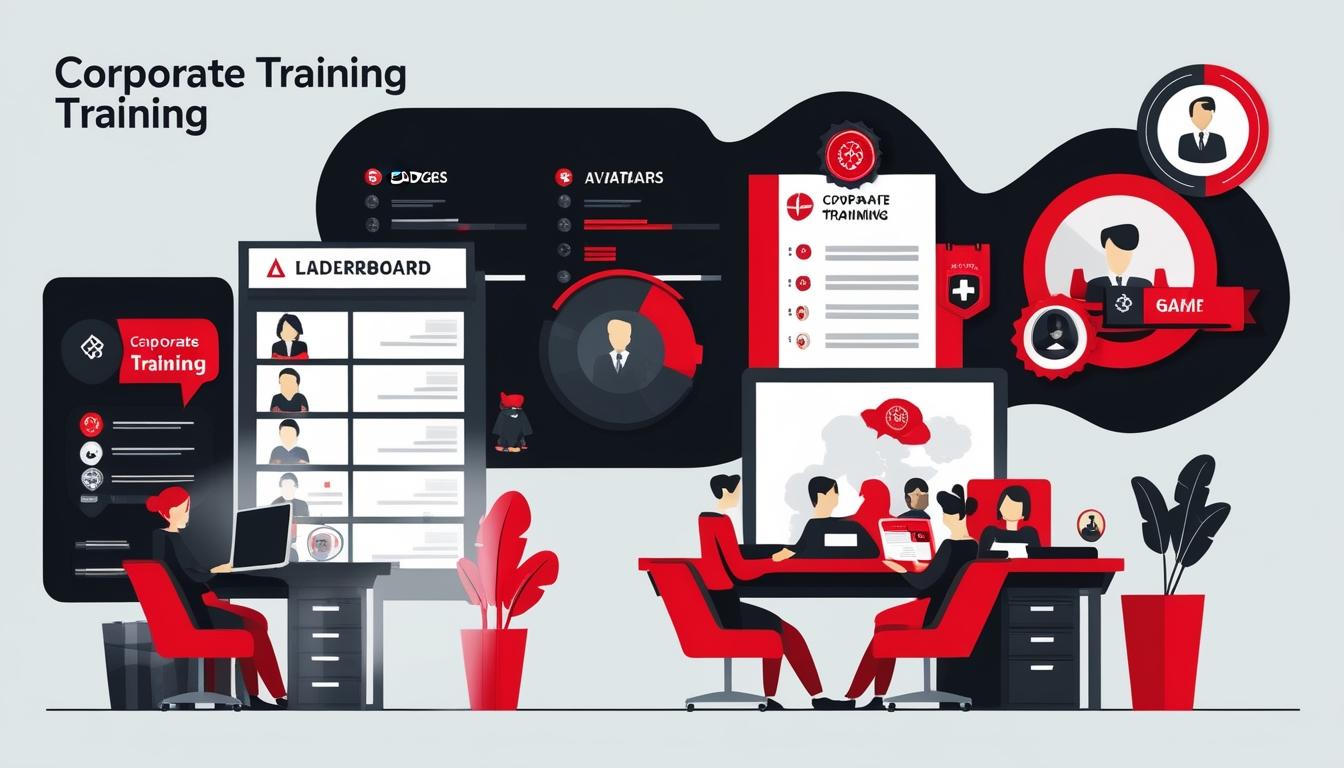The integration of gamification into corporate training processes is rapidly transforming the way businesses engage their employees in learning. Gamification involves the application of game mechanics and interactive game design elements to enhance training outcomes and foster motivation among learners. The concept has emerged as a response to the traditionally monotonous nature of training, aiming to create a more dynamic, engaging, and effective learning experience.
Originating from the understanding that individuals are inherently motivated by competition and achievement, gamification serves to leverage these instincts. With tools such as points, badges, leaderboards, and missions, organisations are rethinking traditional training strategies to incorporate interactive and enjoyable elements, which encourages participation and enhances knowledge retention.
Research by Markets and Markets highlights the growing impact of this trend, predicting that the global gamification market will rise from $9.1 billion in 2020 to approximately $30.7 billion by the end of 2025, achieving a compound annual growth rate (CAGR) of 27.4%. This significant growth underscores the increasing acceptance and implementation of gamified systems in corporate environments.
The psychological foundations of gamification rest on the principles of engagement and rewards. By triggering the release of dopamine in the human brain, gamification creates a sense of achievement when learners complete tasks or overcome challenges. As learners receive constructive feedback and observe their progress through gamified elements, they become more invested in their training journey, ultimately seeking mastery, autonomy, and purpose during the educational process.
The benefits of gamification in training are manifold. Firstly, it significantly boosts employee engagement, transforming training sessions from mundane to interactive. The implementation of leaderboards and challenges helps create a competitive environment that encourages employees to remain focused and committed to their learning paths. Additionally, by actively engaging employees through interactive scenarios and simulations, knowledge retention is notably enhanced. This active participation allows employees to apply concepts more effectively in real-world situations.
Furthermore, gamification caters to diverse learning needs within a workforce. Different individuals possess varying skills and learning styles; gamification provides the flexibility to adapt to these differences. Leadership candidates may be motivated by points leadership boards, while teams can engage in collaborative tasks to foster teamwork.
Several core elements of gamification have proven effective in online learning environments: - Badges: Digital rewards offer tangible recognition for achievements, encouraging the completion of modules. - Leaderboards: These foster a competitive spirit by showcasing top performers, motivating others to improve their performance. - Avatars: Customisable online identities enhance personalisation and connection to the learning material. - Mini-games: Engaging modules turn complex topics into manageable and fun learning experiences.
Applications of gamification extend across various aspects of corporate training. In onboarding programmes, gamification enables new hires to assimilate company policies and values while fostering a sense of belonging. Gamified compliance training incorporates scenario-based modules that help employees navigate real-world dilemmas, thereby increasing their engagement and retention of critical information.
Moreover, emerging technologies are set to further revolutionise gamified learning experiences. The incorporation of Augmented Reality (AR) and Virtual Reality (VR) offers deeply immersive environments for experiential learning. Through AR, learners can engage with digital elements in their physical surroundings, while VR provides fully virtual spaces for skill practice and problem-solving.
The adoption of Artificial Intelligence (AI) and Machine Learning is also transforming gamification by enabling adaptive learning experiences. These technologies facilitate the personalisation of training content based on individual progress, ensuring a tailored and engaging learning path for each employee.
As hybrid learning environments become more ubiquitous, gamification creates seamless experiences that blend online and face-to-face learning. For example, a leadership training initiative may integrate digital challenges with physical workshops, providing a varied and holistic educational experience.
In summary, the growing trend of gamification within corporate training underscores a significant shift in how organisations approach learning and development. By embracing game-based elements, businesses can create engaging, effective, and adaptive training environments that prepare their workforce for challenges in an increasingly dynamic world. The strategic application of gamification leads to impactful learning experiences, catering to diverse employee needs and fostering continuous development throughout their careers.
Source: Noah Wire Services
